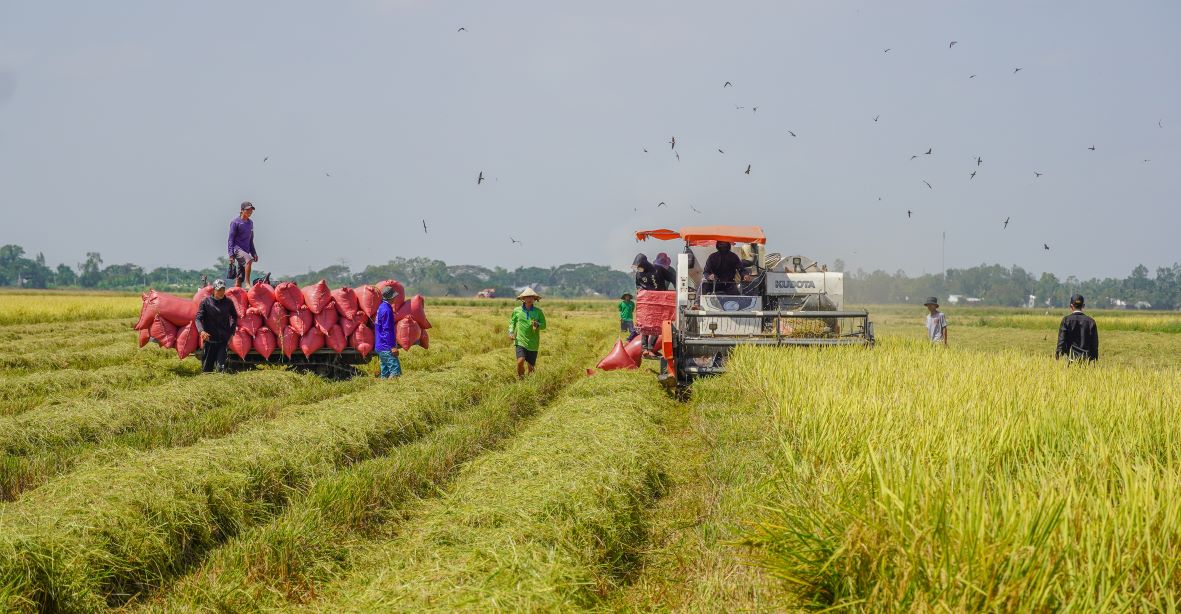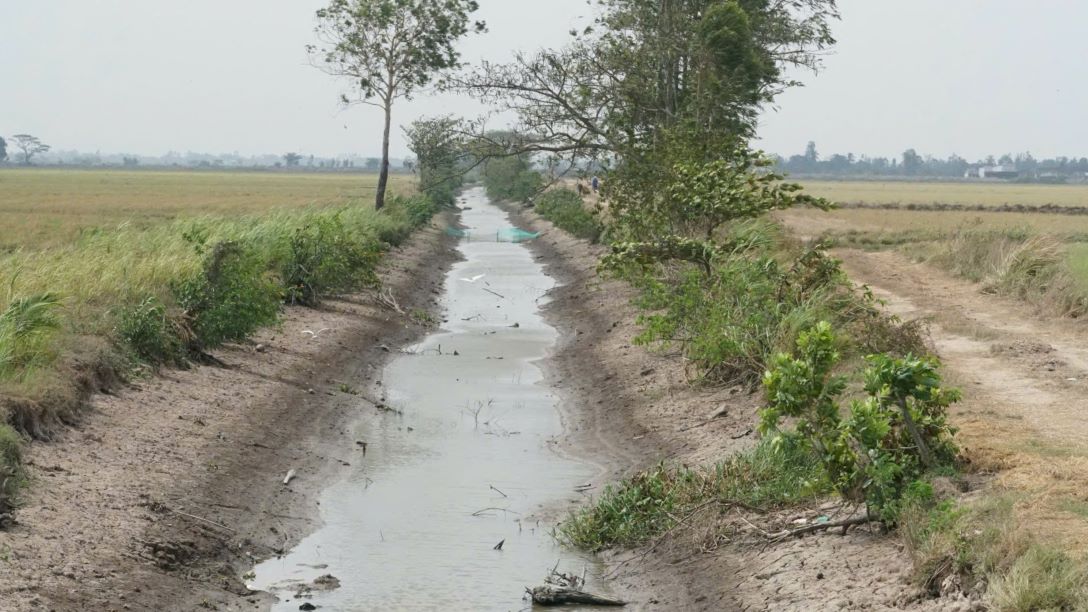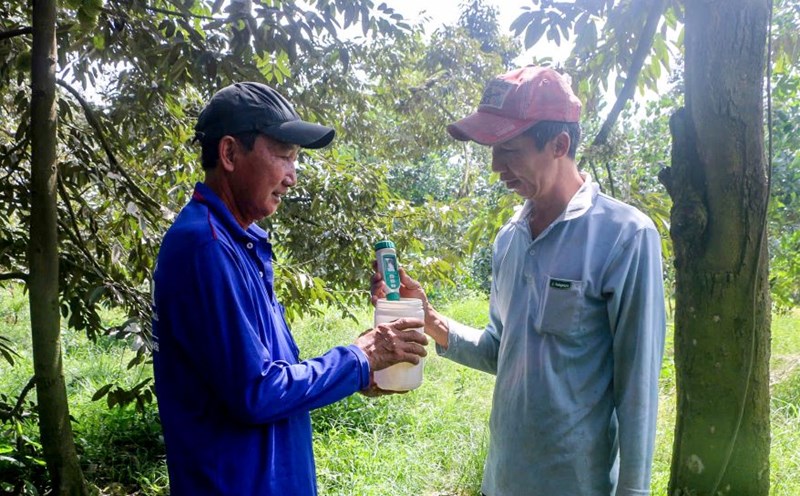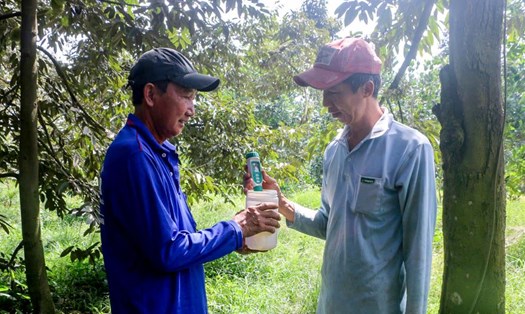Harvesting rice before saltwater attack
Tran De District, a coastal locality in Soc Trang Province, is located in a closed irrigation area, often affected by saltwater intrusion and localized freshwater shortages in the dry season. To ensure the success of the main rice crop of the year (Winter-Spring crop), for many years now, farmers have proactively sowed rice early to harvest before saltwater intrudes into the fields.
Mr. Lieu Quol - a farmer in Vien An commune (Tran De district, Soc Trang province) - shared: The locality often suffers from salt intrusion and water shortages in the dry season, so planting early helps him and many farmers avoid salt intrusion at the end of the season.
"In the 2023-2024 Winter-Spring crop, due to late sowing, the rice yield was affected by salt water. Learning from experience, I will do this crop early according to the recommended crop schedule. Harvesting rice before Tet will both avoid salt water and generate income to prepare for Tet," said Mr. Lieu Quol.

Similarly, Mr. Thach Muol in Dai An 2 commune (Tran De district, Soc Trang province) said that more than 10 years ago, after Tet, rice was just being cultivated and ripened, leading to early salinity intrusion affecting productivity. "Later, we proactively sowed 1 month earlier. Harvesting before or after Tet can avoid damage," said Mr. Muol.
Mr. Muol said that his family is currently harvesting 5 hectares of winter-spring rice, with a yield of 10 tons/ha and selling it for 7,000 VND/kg, bringing in an income of 70 million VND.
Ms. Tra Thi Hanh - a farmer in Tai Van commune (Tran De district, Soc Trang province) - also shared that for nearly 10 years now, her family has proactively sowed the winter-spring rice crop early to avoid drought and salinity, ensuring rice yield and quality. "I sowed the 2024 winter-spring rice crop nearly 1 month earlier than the same period in previous years. 5 hectares of ST25 rice variety yielded 8 tons/ha, sold at 9,100 VND/kg, earning over 72 million VND/ha," said Ms. Hanh.
Abandon the late winter-spring rice crop
Not only sowing early, many farmers in Long Phu, Tran De, My Xuyen districts and part of Soc Trang city are no longer interested in the late winter-spring rice crop (crop 3) to avoid damage caused by drought and saltwater intrusion.
Mr. Nguyen Van Chin in Long Duc commune (Long Phu district, Soc Trang province) said: “Growing rice 3 times a year will not allow the land to rest, lack fertility, and the cost of fertilizer and pesticides for this crop is high. This period is also the peak of the dry season, there is a lack of fresh water, and salt intrusion, so the losses are very high. That is the reason why farmers here have abandoned the third rice crop for decades,” Mr. Chin said.

In fact, in recent years, some farmers have spontaneously sown a third rice crop in the hope of earning more income because they do not want to leave their land vacant and rice prices have increased. However, salinity intrusion has caused most farmers to lose money on their third rice crop. Typically, in the late winter-spring rice crop of 2024, over 600 hectares of rice were damaged in Soc Trang province.
Faced with this situation, every year Soc Trang province advises farmers not to plant late in vulnerable areas such as Long Phu, Tran De, Soc Trang city and My Xuyen. Other localities such as Ke Sach and Chau Thanh must also closely monitor water sources before deciding to plant.
According to the forecast of the Southern Institute of Water Resources, the salinity intrusion in the dry season of 2024-2025 is higher than the average of many years. In particular, from February to April is the period of high salinity. Coastal localities need to proactively take measures to respond to drought and salinity in accordance with the conditions of the region. Proactively planting early to avoid the period of highest salinity in the period of late February - April (with the salinity boundary of 4g/l reaching 45-65km deep from the river mouth) and storing water reasonably will ensure water sources for production in sufficient areas according to the annual plans of localities.











